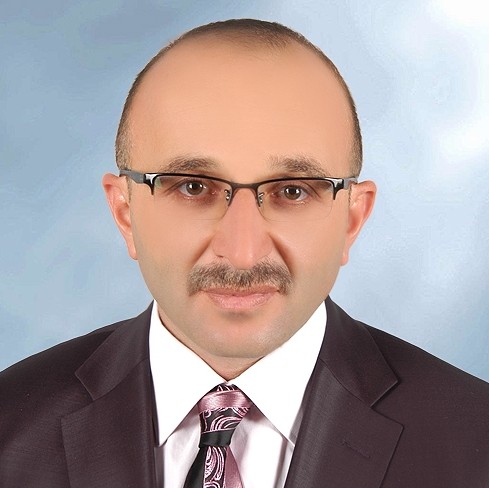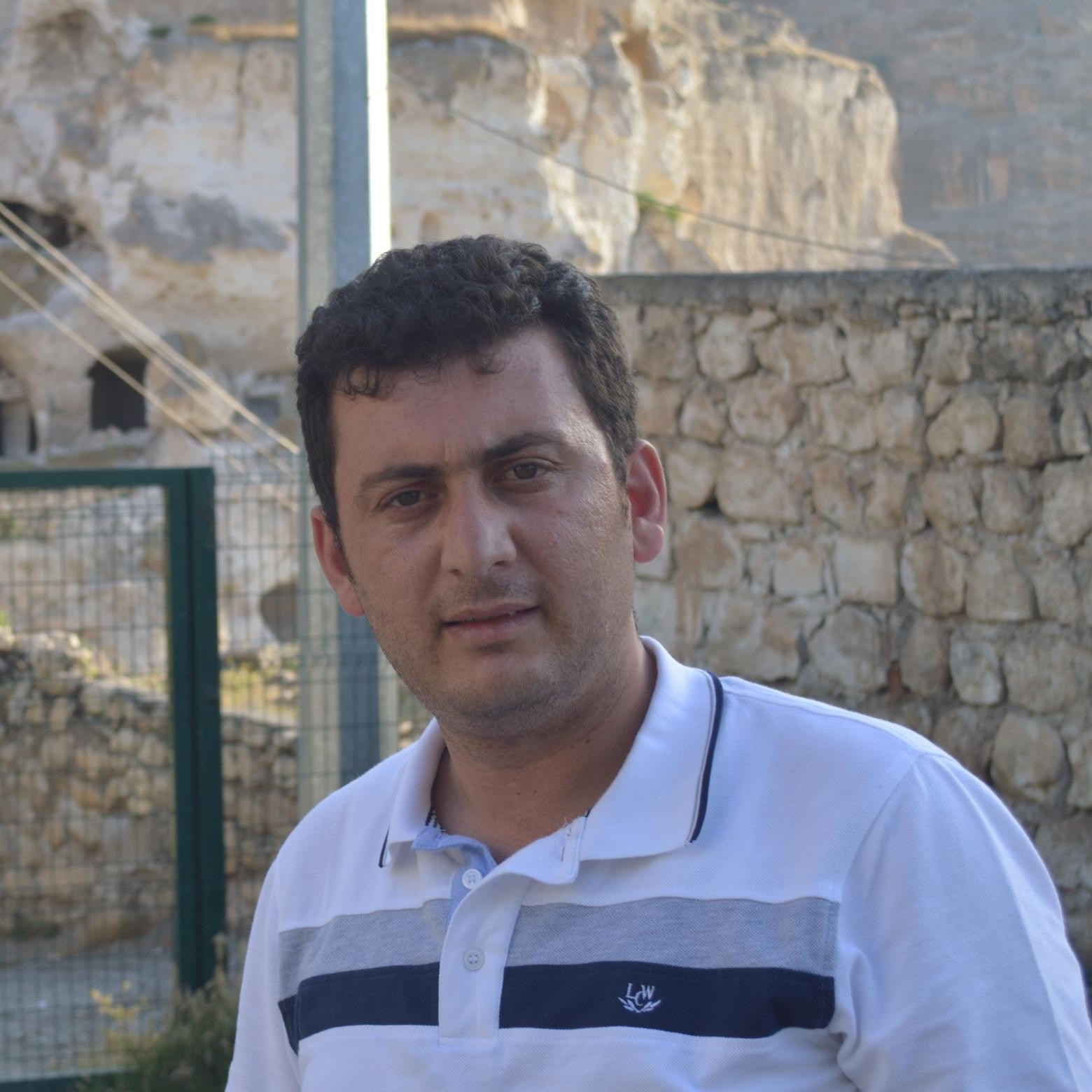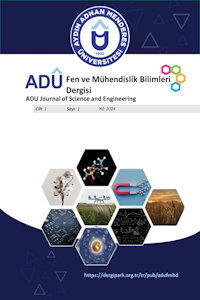ETHICAL PRINCIPLES AND PUBLICATION POLICY
ETHICAL RESPONSIBILITIES AND DUTIES OF AUTHORS, EDITORS AND REVIEWERS
PUBLICATION ETHICS
The publication processes of Aydın Adnan Menderes University Journal of Science and Engineering (Aydın Adnan Menderes University JSE) are based on the production, development and sharing of information impartially using the scientific method. Aydın Adnan Menderes University JSE observes the principles of transparency, confidentiality and accountability within the framework of ethical rules in the entire national and international dissemination process of information. In addition, it aims to continuously improve all processes in an efficient and competitive structure with a quality-oriented approach. Aydın Adnan Menderes University JSE follows the European Code of Conduct for Research Integrity.
• Peer-reviewed articles are studies that require scientific methods and ensure impartiality.
• Aydın Adnan Menderes University JSE users (publisher, editors, author(s), reviewer(s), field editors, and readers must comply with the ethical principles of our journal in all transactions.
• In this context, Aydın Adnan Menderes University JSE's publication ethics and open access policy,
o International Committee on Publication Ethics (COPE) and
o in line with the guidelines and policies published in open access by the Council of Science Editors (CSE) (For example, the "Committee of Publication Ethics (COPE)" Code of Conduct and Best Practice Guidelines for Journal Editors; "Code of Conduct and Best Practice Guidelines for Journal Editors” and “COPE Best Practice Guidelines for Journal Editors”) require that all components of the publication process comply with ethical principles.
• In addition, the journal's editorial and publication processes comply with the rules of the Turkish Council of Higher Education regulations and follow up on suspected cases of research and publication abuse.
These ethical rules and responsibilities are summarized below. All authors/reviewers are expected to read and understand the ethical policy of Aydın Adnan Menderes University JSE before submitting/evaluating the article.
ETHICAL DUTIES AND RESPONSIBILITIES OF THE PUBLISHER
Aydın Adnan Menderes University JSE's editorial board consists of academicians who are experts in their fields from various countries and universities. Members of the Editorial Board are appointed considering the scientific branches of science, and the members are appointed according to the editors-in-chief and editorial board members' own requests. The heads of the editorial board and, depending on the situation, one or more deputy editors-in-chief and field editors are determined. A new member is appointed to replace the departed member. Depending on the subject of the article, the editor may, when necessary, send an article to faculty members who are not members of the Editorial Board for review as field editors.
Aydın Adnan Menderes University JSE takes all necessary measures to clarify a situation regarding any article, to make changes to the article in question, or to allege or prove that the work contains any scientific misconduct, fraudulent publication, plagiarism or close cooperation with the editors. Aydın Adnan Menderes University JSE, together with the editors, will take appropriate steps to prevent the publication of the article in which any abuse occurs and will not allow such abuse or knowingly allow such abuse to occur under any circumstances. Aydın Adnan Menderes University JSE is responsible for responding to all claims or doubts raised by readers, reviewers or other editors. In such a case, the relevant article is evaluated by the journal and necessary explanations are made.
RESPONSIBILITIES OF THE BOARD OF EDITORS
Aydın Adnan Menderes University JSE Editorial Board is responsible for every article applied to Aydın Adnan Menderes University JSE, and even all processes after its publication, and the Editorial Board knows this responsibility. This responsibility includes considering only the public interest in decisions made on issues related to the journal; It requires making decisions independently, without considering personal gain. The relationship between the publisher and the Editorial Board is based on the principle of independence; all decisions taken by the editors are independent of the publisher and other persons and organizations.
The Editorial Board strives to constantly improve the Journal and increase the quality of its publication. It also ensures the determination and implementation of journal policies such as publication, blind review process, evaluation process, and ethical principles. The Editorial Board protects the copyright of the authors of articles published in Aydın Adnan Menderes University JSE and is responsible for taking measures regarding intellectual property rights, unscientific-unethical behavior, plagiarism, and citation fraud during the article and journal publication process. The Editorial Board prepares a "Writing Rules" containing the information requirements of the author(s) and a "Reviewer evaluation guide" containing the information that the reviewers will need during the evaluation phase, and updates it when necessary. The Editorial Board determines policies that motivate reviewers and author(s) and keeps the records of each article and correspondence related to the journal electronically.
ETHICAL DUTIES AND RESPONSIBILITIES OF EDITORS AND FIELD EDITORS
Editors and field editors of Aydın Adnan Menderes University Journal of Science and Engineering Sciences, "Committee of Publication Ethics (COPE) Code of Conduct and Best Practice Guidelines for Journal Editors"; "Code of Conduct and Best Practice Guidelines for Journal Editors" and "COPE Best Practice" "Guidelines for Journal Editors" must have the ethical duties and responsibilities specified in these guides, in line with the guidelines and policies published in open access. These duties and responsibilities are summarized below.
• Editors strive to meet the information needs of reviewers, author(s), researchers, practitioners and readers, to provide feedback when necessary, and to act following the principles of openness in matters requiring correction and clarification during the publication process.
• When deciding to publish articles, editors take care to ensure that the articles are original and contribute to the scientific literature, readers, researchers and practitioners.
• When making positive or negative decisions about articles, editors take into consideration the original value of the articles, their contribution to the field, the validity and reliability of the research method, the clarity of expression, and the purpose and scope of the journal.
• Editors take the submitted articles to the preliminary evaluation stage as long as there are no serious problems, take into account the positive reviewer suggestions, and do not change the decisions made by the previous editor(s) unless there are serious problems.
• Editors implement the blind peer-review and evaluation process policies that are among the journal's publication policies, keep the identity information of the reviewers confidential, and ensure that each article is evaluated impartially and within due time.
• Editors send articles by taking into account the field editors and reviewers' areas of expertise, and support unbiased and independent evaluations.
• Editors are responsible for guiding the reviewers during the article evaluation process and providing the information they request.
• The editor is obliged to conceal the identity information of the author and reviewer due to blind peer-review process.
• Editors are responsible for taking precautions against relationships and conflicts of interest that may arise between the author(s), reviewers and third parties in order to complete the impartial and independent evaluation processes of the articles.
• Editors seek to ensure that the reviewer pool is constantly updated and consists of a wide range.
• Editors must take into account the opinions and suggestions of the advisory board about the articles.
• The decisions editors make about the article should be independent of the journal owner and the publisher.
• Editors are responsible for observing the journal publishing principles, journal objectives and international standards in the articles to be published in the journal.
• Editors are responsible for not transferring the personal information of the article author(s) to third parties without their consent.
• Editors prevent peer-review process that do not comply with academic etiquette and are not scientific.
• Editors ensure that journal publication processes are carried out following publication policies and guidelines, inform those in charge of the developments in publication policies during the process, and prepare training programs when necessary.
• Editors communicate effectively with everyone involved in the publication process and hold meetings at regular intervals.
• Editors ensure the protection of personal data in the articles evaluated. They protect the individual data of authors, reviewers and readers.
• Editors pay attention to the protection of human and animal rights in articles. They care about documenting the explicit consent of the participants of the article. The ethics committee approval of the participants of the article is responsible for rejecting the article when they do not have permission for experimental research.
• Editors take precautions against abuse of power. When there are complaints about abuse of power, it conducts an objective investigation and shares the relevant findings.
• Editors ensure that errors, inconsistencies or misguidance in articles are corrected.
• Editors protect the intellectual property rights of published articles and defend the rights of the journal and the author(s) in case of violation.
• They also take the necessary precautions to ensure that the content of the published articles does not violate the intellectual property rights of other publications. They check the originality and similarity.
• Editors take into account consistent criticisms of the articles published in the Journal and give the author(s) of the criticized articles the right to respond.
• Editors also consider studies containing negative results.
• Editors are responsible for providing clear and informative answers to complaints from reviewers, authors and readers.
• If situations such as manipulation, distortion and use of fabricated data are detected in the data used in the articles, the article will be rejected.
• Our journal has the right to request output files of the analysis results from the authors, based on the feedback given by the editor and/or reviewers.
ETHICAL DUTIES AND RESPONSIBILITIES OF REVİEWERS
In the Aydın Adnan Menderes University JSE article evaluation process, a two-way blind peer-review principle is applied in which the author(s) do not know the reviewers and the reviewers do not know the authors. The reviewers cannot communicate directly with the authors. Article evaluation forms, notes on the text and correction requests are forwarded to the author(s) by the editors through the journal management system. Reviewers who will evaluate the articles applied to Aydın Adnan Menderes University JSE must bear the following ethical responsibilities.
• Reviewers must agree to evaluate only articles related to their expertise.
• Reviewers must make the evaluation impartially and confidentially.
• Reviewers should destroy the articles sent to them after the evaluation process and use them only after they are published.
• Nationality, gender, religious belief, political belief and commercial concerns should not compromise the impartiality of the evaluation.
• When reviewers realize that there is a conflict of interest, they must refuse to evaluate the article and inform the editors.
• Reviewers should constructively make the evaluation, following academic etiquette. Personal comments and expressions that contain insults, slander and hostility should be avoided.
• Reviewers must evaluate the article they have accepted to evaluate within the required time.
ETHICAL DUTIES AND RESPONSIBILITIES OF AUTHORS
• Author(s) cannot follow the process for the same article in two journals at the same time. When the process is completed in one journal and the article is rejected, the article can be sent to the other journal. An article published in another journal cannot be sent to Aydın Adnan Menderes University Journal of Science and Engineering.
• Author(s) must prepare and submit their work original to Aydın Adnan Menderes University Journal of Science and Engineering.
• The author(s) must accurately and completely cite the sources they used while writing the article, in line with ethical principles.
• The names of people who did not contribute to the article should not be written as authors, and changing the author order of an article applied for publication, removing or adding authors should not be recommended.
• If there is a need for operations such as adding authors, changing the author order, or removing authors to an article whose evaluation process has started in the Aydın Adnan Menderes University Journal of Science and Engineering, an application can be made to the journal management with the approval of all Author(s). The journal management reviews the application and notifies the responsible author of the decision.
• People who have a conflict of interest regarding the article applied for publication must notify the editors and explain.
• During the evaluation process, the editor, reviewer and field editor may request information or raw data from the author(s) regarding their articles. Therefore, the author(s) should have the information or raw data of their articles ready to present.
• The author(s) must document that they have received permission to use the data they use in their articles, permissions for research and analysis, or the approval of the participants on whom they conducted research.
• When the author(s) notice an error regarding their article, which is at the evaluation and early appearance stage or published electronically, they must contact the editor to inform, correct or withdraw.
• The author(s) have received ethics committee approval for research that requires collecting data through quantitative or qualitative methods such as experiments, surveys, scales, interviews, observations, focus group studies, which require ethics committee decision; The name of the ethics committee, decision date and number should be stated in the "Ethical Approval" section of the candidate article, and the document showing the ethics committee decision should be uploaded to the system together with the application of the article.
• The author(s) must present evidence in the article that they have paid attention to ethical principles during the data collection process (such as obtaining permission from others to use their documents such as scales, surveys, photographs).
• Articles must state that research and publication ethics and copyright regulations for intellectual and artistic works are complied with.
• If the research was conducted on human and animal subjects, it should be stated that the research was carried out in accordance with international declarations, guidelines, etc.
• Ethics committee approval is not required from the author(s) for review articles. However, in articles that do not require an ethics committee decision, it should be stated in the "Ethical Approval" section of the article that an ethics committee decision is not required.
• Each article submitted for evaluation for publication is checked for plagiarism by assistant editors using iThenticate software.
• If the similarity index (SI) of the article is over 20%, excluding the Reference sections, and the single source similarity rate is over 5%, it is sent back to the relevant author to reduce it below these rates.
• If plagiarism is proven after publication of the relevant article, the article will be immediately withdrawn and removed from the website. In such a case, the articles of the relevant authors will be considered unsuitable for publication in the Aydın Adnan Menderes University Journal of Science and Engineering for five years.
• If errors or inaccuracies are found about the article in any of the pre-checking, evaluation, editing and publication stages, the author(s) must inform the journal management to correct or withdraw the article.
REPORTING ANY SITUATION THAT DOES NOT COMPLY WITH ETHICAL PRINCIPLES TO THE EDITOR
In case of behavior that does not comply with the ethical principles regarding editors, reviewers, authors at Aydın Adnan Menderes University JSE, or an unethical situation regarding an article in the evaluation process, in early view or published, it should be reported via e-mail to fbedergi@adu.edu.tr
AYDIN ADNAN MENDERES UNIVERSITY JOURNAL OF SCIENCE AND ENGINEERING PUBLICATION POLICY
Open Access Policy
Articles published in Aydın Adnan Menderes University Journal of Science and Engineering are available in full text as open access on our journal page. We think that this situation will contribute more to science.
Privacy Statement
The articles published on the website of Aydın Adnan Menderes University Journal of Science and Engineering and the confidential information of the articles under evaluation will be used only for the stated purposes of the journal. It will not be made available for any other purpose or for the use of other persons.
Evaluation Policy
In all evaluation stages of articles sent to Aydın Adnan Menderes University Journal of Science and Engineering, the identities of the article authors and the reviewers who evaluate the article are hidden by double blind peer-review process. Two positive reviewer reports are required for articles to be published.
The publication review process of the studies submitted to Aydın Adnan Menderes University Journal of Science and Engineering is expected to be completed in 6 months. However, this period does not include the period during which the editor or reviewers ask the author(s) to edit and the time during which the author(s) completes the editing. Corrections cannot be made to a published article. However, if the author requests correction, a short correction text may be published in the issue following the correction request.
Publication Fee
In accordance with Aydın Adnan Menderes University JSE Publication Rules, article submission and publication fees are not charged from authors. Article submission to our journal is free.
Archiving
All articles published by Aydın Adnan Menderes University JSE are archived on the DERGİPARK system as full text, the contents of the journal, cover page and full issue files, and are made available to all users.
Advertising and Sponsorship
Aydın Adnan Menderes University JSE does not accept any advertisements or sponsorships and does not include them on its broadcast page.
Plagiarism policy
Articles sent to Aydın Adnan Menderes University JSE are checked for plagiarism, excluding sources, with the "iThenticate Plagiarism Detection" software, which is available for personal use by the Author(s). In the checks carried out, the similarity rate must be below 20% (excluding Sources) and the single source similarity rate must not exceed 5%.
Studies requiring Ethics Committee Permission/legal/special permission
In accordance with Aydın Adnan Menderes University JSE publication rules, in studies that require Ethics Committee Permission/legal/special permission, the statement indicating where, in what scope, on which date and issue number the Ethics Committee Permission was obtained must be stated in the article when submitting the article to the Journal.
Research requiring Ethics Committee permission is as follows.
• All kinds of research conducted with qualitative or quantitative approaches that require collecting data from participants using survey, interview, focus group study, observation, experiment and interview techniques.
• Use of humans and animals (including materials/data) for experimental or other scientific purposes,
• Clinical studies conducted on humans,
• Research conducted on animals,
• Retrospective studies in accordance with the personal data protection law,
Moreover;
• Obtaining and specifying permission from the owners for the use of scales, surveys and photographs belonging to others,
• Stating that copyright regulations are complied with for the ideas and artistic works used
Copyright Transfer Agreement
Author(s) in all articles sent to Aydın Adnan Menderes University JSE are required to sign the "Copyright Transfer Agreement", the content of which is stated below. This contract text should be downloaded on the article submission page, signed by all Author(s), scanned in PDF format and uploaded to the system.
1. All broadcasting rights belong to Aydın Adnan Menderes University JSE,
2. It complies with the writing and publication rules specified by the journal,
3. The article is original and has not been previously published in Turkish or a foreign language at home or abroad, or is not under evaluation for publication,
4. Scientific and ethical responsibility belongs to us, if the other Author(s) cannot be reached; I accept and declare that all Author(s) are aware of the study and that I assume the responsibilities of the other Author(s) as the first author of the article.






































































